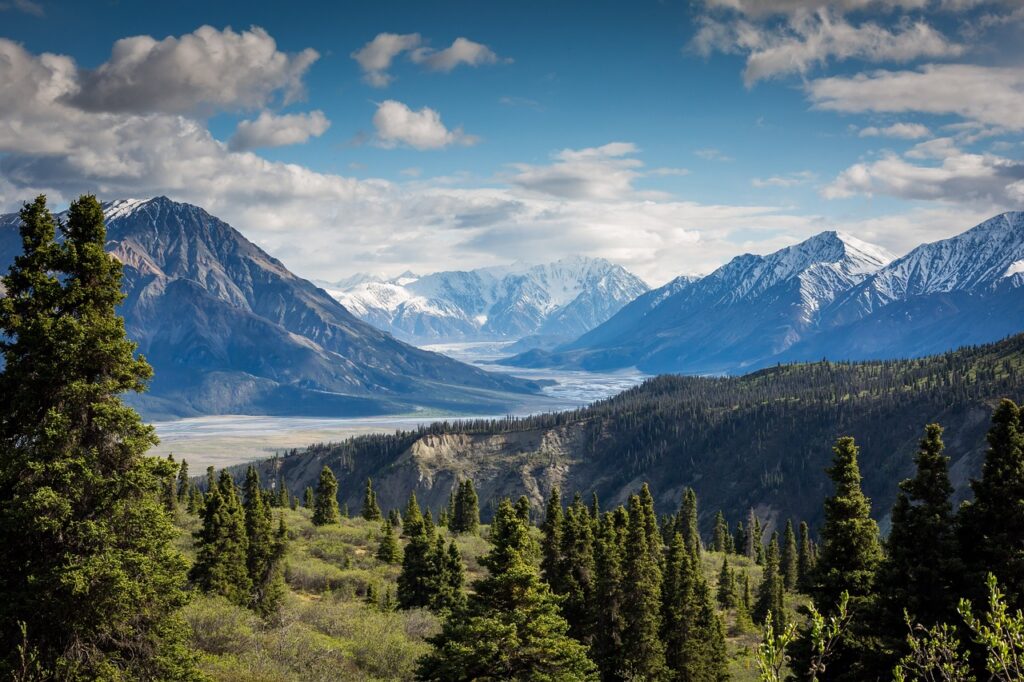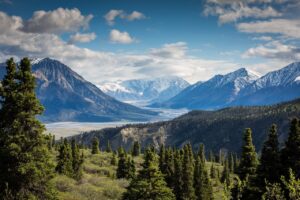Last Updated on April 3, 2024 by ETC Team

As you spend more time exploring the Great Outdoors, you are likely to hear someone speak the words “Leave No Trace”. You may wonder what it actually means. Simply put, it’s the best practices one should follow to enjoy but also protect our natural spaces.
Just imagine the millions of visitors embarking on countless wilderness outings in the United States each year. Now picture the impact that is made on the natural world in ways such as litter, invasive species, habituated wildlife, trail erosion, polluted water sources and more. While most of us have no intention to cause damage while outdoors, we may lack the knowledge to protect it. Each of us plays an important role in preserving these spaces and with a little awareness, we can avoid overlooking a few important behaviors.
By embracing the practices highlighted below, we can help to minimize those impacts. And the great news is that these principles can be applied anywhere, at any time, by anyone taking part in recreational activities.
Who Should Use the Leave No Trace Seven Principles?
While the Leave No Trace Seven Principles began as a guide for remote backcountry users who tend to camp overnight, the following guidelines apply to what’s become known as frontcountry users as well.
Backcountry areas are those more often accessed by backpackers during overnight hours, while frontcountry refers to places easily accessed by car, like city and state parks. Frontcountry is where you’ll often find day-use visitors like dog walkers, picnickers, hikers and runners. These areas are also popular for car camping.
The Leave No Trace Seven Principles
- Plan ahead and prepare
- Travel and camp on durable surfaces
- Dispose of waste properly
- Leave what you find
- Minimize campfire impacts
- Respect wildlife
- Be considerate of other visitors
Plan Ahead and Prepare
When you’re poorly prepared, you’re more likely to run into problems. Lack of good research can lead to situations where you can become fatigued or disoriented. Because of this you may be forced to make poor choices. Planning ahead includes doing research about your destination and packing accordingly.
• Plan Ahead and Prepare
• Know the regulations and special concerns for the area you’ll visit.
• Prepare for extreme weather, hazards, and emergencies.
• Schedule your trip to avoid times of high use.
• Visit in small groups when possible. Consider splitting larger groups into smaller groups.
• Repackage food to minimize waste.
• Use a map and compass or GPS to eliminate the use of marking paint, rock cairns or flagging.
Travel and Camp on Durable Surfaces
When exploring your surroundings and setting up your picnic or overnight camp, seek out resilient types of terrain. Ideal durable surfaces include established trails and campsites, rock, gravel, dry grasses or snow.
• Travel and Camp on Durable Surfaces
• Durable surfaces include maintained trails and designated campsites, rock, gravel, sand, dry grasses or snow.
• Protect riparian areas by camping at least 200 feet from lakes and streams.
• Good campsites are found, not made. Altering a site is not necessary.
• In popular areas, front country or backcountry:
• Concentrate use on existing trails and campsites.
• Walk single file in the middle of the trail, even when wet or muddy.
• Keep campsites small. Focus activity in areas where vegetation is absent.
• In pristine areas:
• Disperse use to prevent the creation of campsites and trails.
• Avoid places where impacts are just beginning.
Dispose of Waste Properly
This principle applies to everything from litter to rinse water to human waste.
• Pack it in, pack it out. Inspect your campsite, food preparation areas, and rest areas for trash or spilled foods. Pack out all trash, leftover food and litter.
• Utilize toilet facilities whenever possible. Otherwise, deposit solid human waste in catholes dug 6 to 8 inches deep, at least 200 feet from water, camp and trails. Cover and disguise the cathole when finished.
• Pack out toilet paper and hygiene products.
• To wash yourself or your dishes, carry water 200 feet away from streams or lakes and use small amounts of biodegradable soap. Scatter strained dishwater.
Leave What You Find
The adage “take only pictures, leave only footprints” still applies.
Preserve the past: examine, photograph, but do not touch cultural or historic structures and artifacts.
• Leave rocks, plants and other natural objects as you find them.
• Avoid introducing or transporting non-native species.
• Do not build structures, furniture, or dig trenches.
Minimize Campfire Impacts
While campfires are an everlasting camping ritual, they can also be one of the most destructive ones. Far better choices include a lightweight stove for cooking and a candle lantern for light. Let’s be honest, stargazing is amazing activity while away from light pollution, and is best enjoyed when your campsite is in total darkness.
• Campfires can cause lasting impacts to the environment. Use a lightweight stove for cooking and enjoy a candle lantern for light.
• Where fires are permitted, use established fire rings, fire pans, or mound fires.
• Keep fires small. Only use down and dead wood from the ground that can be broken by hand.
• Burn all wood and coals to ash, put out campfires completely, then scatter cool ashes.
Respect Wildlife
We cannot repeat this one enough. Do not approach animals. Both you and the wildlife will enjoy encounters more if you stick to the zoom lens on your camera and pack with you a pair of binoculars.
• Observe wildlife from a distance. Do not follow or approach them.
• Never feed animals. Feeding wildlife damages their health, alters natural behaviors, [habituates them to humans], and exposes them to predators and other dangers.
• Protect wildlife and your food by storing rations and trash securely.
• Control pets at all times, or leave them at home.
• Avoid wildlife during sensitive times: mating, nesting, raising young, or winter.
Be Considerate of Other Visitors
We’ve all heard “Treat others the way would like to be treated”. Well, this applies in the great outdoors too.
• Be Considerate of Other Visitors
• Respect other visitors and protect the quality of their experience.
• Be courteous. Yield to other users on the trail.
• Step to the downhill side of the trail when encountering pack stock, such as horses and mules.
• Take breaks and camp away from trails and other visitors.
• Let nature’s sounds prevail. Avoid loud voices and noises.




[…] 4. Get ready for your trip: Condition yourself to do the planned hike with a fully loaded pack; get your permits, if needed; brush up on Leave No Trace principles. […]
[…] unwashed dishes left unattended or overnight are just an open invitation for these creatures. The Leave No Trace 7 principles are important to follow but here are some quick tips to keep in mind which will help keep things […]
[…] Bring only what you need and follow the 7 Leave No Trace Principles. […]
[…] Leave No Trace Seven Principles […]
[…] Leave No Trace 7 Principles […]
[…] by bears and other critters, is about as basic as it gets. This technique can be great for limiting your impact on your surroundings. There are a few methods you can choose when hanging your […]